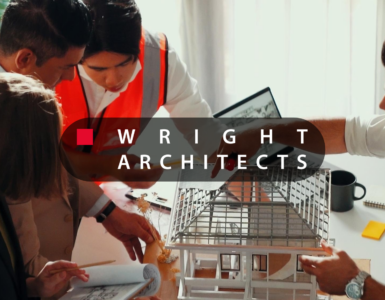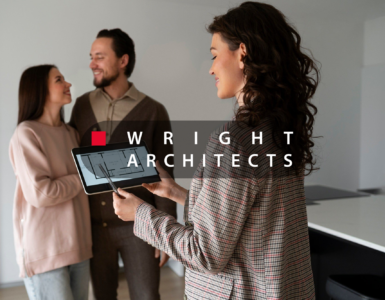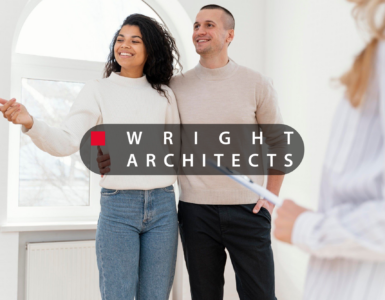Why Green Design Matters for the Northeast
Sustainability in residential architecture is no longer an optional feature; it is a market-driven necessity. Across the United States, families, developers, and communities are recognizing that energy efficiency, resource conservation, and healthier living spaces are essential for long-term value. According to Statista, demand for energy-efficient housing solutions in the U.S. has grown steadily over the last decade, with mid-sized residential projects, typically ranging between 2,000 and 4,000 square feet, representing one of the fastest-growing segments.
This momentum is particularly strong in the Northeast, where unique climate conditions and a deep cultural appreciation for heritage architecture intersect with modern sustainability goals. Here, discerning homeowners and investors are prioritizing environmental performance, long-term cost savings, and regional identity over short-term construction speed. Factors such as rising energy costs, stricter state regulations on emissions, and an increased awareness of climate resilience have all amplified the urgency of integrating sustainable practices into every stage of residential design.
For many property owners, the value of sustainability in residential architecture goes beyond energy bills. In the Northeast, where seasonal extremes demand both efficient heating and cooling strategies, green design ensures comfort without compromising aesthetics or authenticity. Mid-sized residential projects in this region often balance traditional design elements, such as stone facades, timber details, or farmhouse proportions, with advanced building systems like high-efficiency insulation, passive solar orientation, and renewable energy integration. This blend allows homeowners to honor the architectural character of the Hudson Valley and surrounding areas while benefiting from measurable performance improvements.
In this evolving context, Wright Architects, a respected design firm specializing in Hudson Valley residential architecture, has been a consistent voice advocating for high-performance, site-sensitive design. Their portfolio demonstrates how sustainability in residential architecture can be seamlessly woven into a variety of styles, from contemporary retreats to historically inspired farmhouses. More importantly, their projects reveal that green design is not only environmentally responsible but also makes compelling financial sense for mid-sized projects. Energy savings, reduced maintenance costs, and increased property value all contribute to the economic viability of sustainable building strategies.
By championing principles of sustainability in residential architecture, Wright Architects reinforces the idea that environmentally conscious design is not a trend, it is the future of Northeast housing. The firm’s commitment to Hudson Valley residential architecture highlights how local knowledge, regional materials, and innovative design strategies can come together to create homes that are durable, efficient, and deeply connected to their surroundings.
Economic Incentives for Sustainable Homes
The financial case for sustainable residential design has strengthened significantly in recent years, making it not only an environmentally conscious choice but also a sound investment strategy. Several interrelated factors are driving this shift, creating a compelling rationale for homeowners, developers, and investors to prioritize sustainability in their projects.
Energy Savings
The U.S. Department of Energy estimates that homes designed with advanced insulation, airtight construction, and passive solar strategies can reduce energy consumption by up to 50%. For the Northeast, where winters can be harsh and summers humid, these savings translate into substantial reductions in monthly utility bills and long-term operating costs. Wright Architects leverages its expertise in developing energy-efficient house plans tailored to the Hudson Valley’s diverse microclimates. By adapting each design to the site’s solar orientation, prevailing winds, and seasonal variations, the firm ensures that sustainable strategies are not generic add-ons but integral components of the home’s architecture. Over time, this careful approach means lower expenses for heating, cooling, and electricity, an economic advantage that compounds year after year.
Incentives and Rebates
Financial incentives further strengthen the case for sustainability. New York State offers substantial tax credits and incentives for energy-efficient construction, particularly through programs like NYSERDA. These programs are designed to reward innovation in building performance, providing homeowners and developers with direct financial relief in the form of rebates, grants, and credits. In many cases, these benefits can offset a significant portion of the upfront costs of green construction, thereby improving return on investment. For developers working on mid-sized residential projects, the availability of state-backed support not only enhances profitability but also makes projects more attractive to buyers seeking modern, eco-conscious homes.
Resale Value
Another important financial dimension of sustainable building is resale value. Homes with documented sustainable features consistently outperform traditional builds in resale markets. A 2023 study published by the U.S. Green Building Council found that certified green homes in the Northeast sold for an average of 9% more than their conventional counterparts. Beyond the numbers, the demand for environmentally responsible living spaces continues to grow as younger generations of buyers place greater emphasis on health, energy efficiency, and ecological stewardship. A well-designed, sustainable home becomes more than a residence, it is a lifestyle asset that retains and even increases its market desirability over time.
A Shift in Perspective
These trends highlight why investors and developers increasingly see sustainability not as a cost burden, but as a revenue-enhancing strategy. What was once considered an “extra” or luxury feature is now a driver of financial performance. Energy savings reduce operating expenses, state programs accelerate payback periods, and higher resale values strengthen long-term equity. For firms like Wright Architects, which specialize in marrying design excellence with performance, these economic incentives reinforce the idea that green building is not only the right environmental choice but also the smarter financial one.
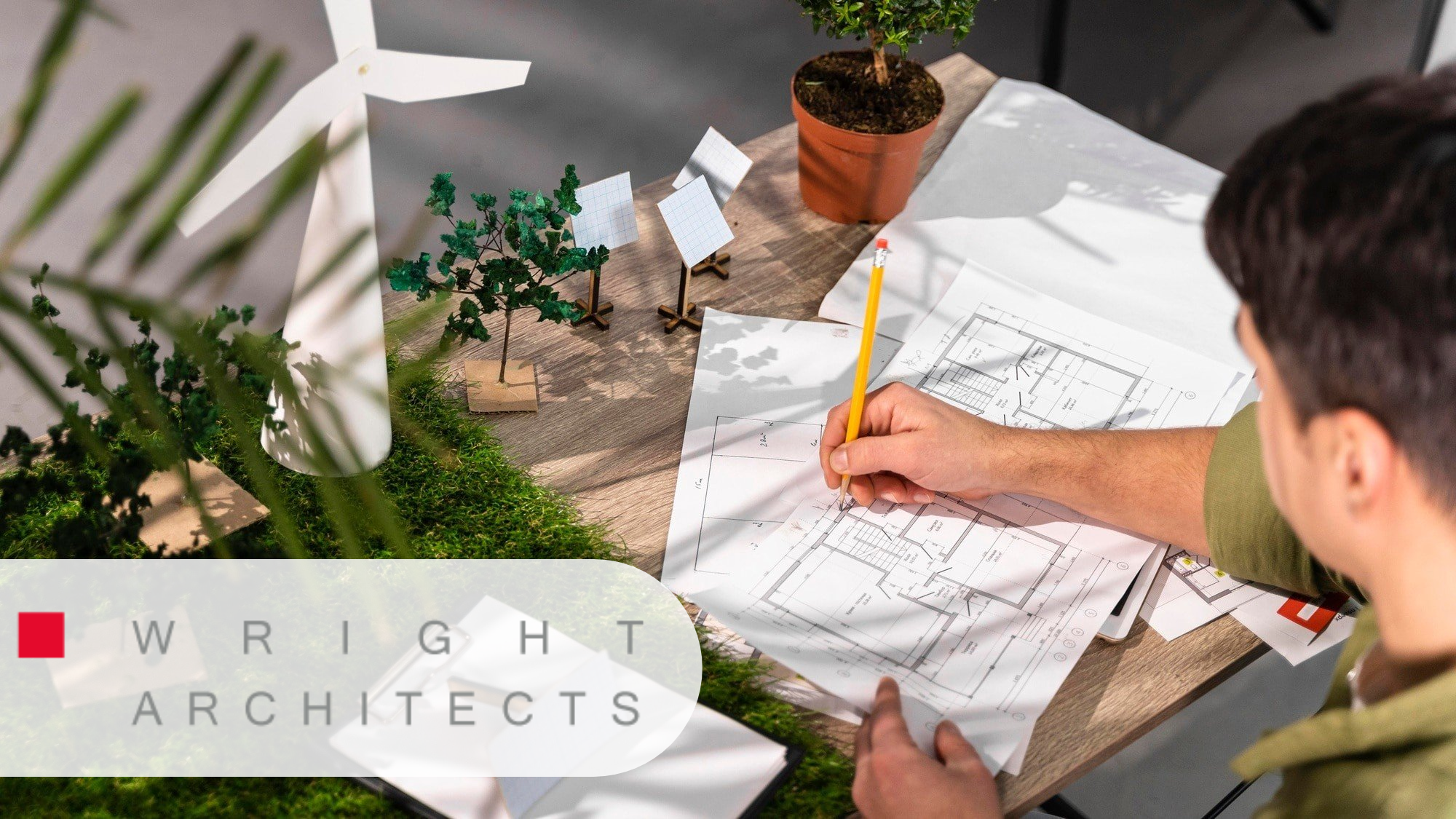
Regional Identity and Site Sensitivity
The Hudson Valley’s architectural landscape is defined by its terrain, heritage, and cultural expectations. Rolling hills, riverfront vistas, and historic town centers all contribute to a setting where architecture must feel both timeless and deeply rooted in place. Wright Architects emphasizes that custom home design services must respond to this context rather than impose standardized templates. Each project is an opportunity to reflect the character of its site while meeting the unique lifestyle goals of the homeowner. A mountainside residence near Woodstock, for example, requires a different design strategy than a riverfront retreat in Rhinebeck, with each location calling for distinct approaches to views, access, energy use, and environmental protection.
This sensitivity to site conditions is more than aesthetic, it is fundamental to sustainable, resilient design. Proper orientation allows homes to take advantage of natural sunlight and passive solar heat in the winter while minimizing overheating during the summer months. Natural shading strategies, such as tree placement or extended rooflines, provide comfort while reducing reliance on mechanical cooling. Stormwater management is equally critical in the Hudson Valley, where seasonal rains and variable soil conditions demand systems that protect the home while also preserving the surrounding ecosystem. Integration with native materials further strengthens this relationship, grounding the home in its natural context while reducing the carbon footprint associated with transportation and processing.
Wright Architects’ approach reflects an understanding that true sustainability means aligning design with both ecological and cultural identity. By respecting the unique topography and vernacular traditions of the Hudson Valley, their custom home design services ensure that new construction feels like a natural extension of the landscape rather than an intrusion upon it. This careful balance fosters not only visual harmony but also long-term economic and environmental benefits for homeowners.
What sets Wright Architects apart is their dual expertise as a PHIUS Certified Passive House Consultant and Certified Passive House Tradesperson. This distinction ensures that homes are optimized for both performance and resilience. Passive House design principles, including airtight construction, advanced insulation, and energy recovery ventilation, are adapted to the specific conditions of each site. A home in the mountains may require specialized strategies for snow load and thermal retention, while a riverfront property must account for humidity control and flood mitigation. By integrating Passive House methodology into regionally responsive architecture, Wright Architects delivers homes that are simultaneously efficient, durable, and uniquely tied to their environment.
In the Hudson Valley, where natural beauty and architectural heritage are equally prized, regional identity and site sensitivity are not optional, they are essential. Wright Architects demonstrates how forward-thinking design can honor place, protect resources, and provide lasting value for homeowners who demand more than standard solutions.
Balancing Scale and Performance
While green strategies are often associated with high-end, large-scale estates, mid-sized projects offer perhaps the best balance of efficiency and affordability. These homes, typically ranging between 2,000 and 4,000 square feet, are large enough to incorporate advanced sustainable technologies yet compact enough to ensure that investments in energy efficiency deliver meaningful returns. Wright Architects highlights that this “sweet spot” in residential design provides homeowners and developers with a rare opportunity to achieve both ecological responsibility and financial practicality.
Cost-to-Benefit Ratio
Sustainable upgrades, such as triple-glazed windows and advanced HVAC systems, yield the greatest proportional savings in homes of moderate size. Large-scale estates may dilute the efficiency of each individual feature across expansive square footage, while very small homes can sometimes limit the integration of higher-performance systems. Mid-sized residences, however, optimize the relationship between upfront investment and long-term savings. For example, the heating and cooling loads in these homes are substantial enough to justify energy recovery ventilation or geothermal systems, yet the total construction costs remain manageable compared to luxury-scale builds. Over the lifetime of the home, this translates into lower operating expenses, reduced maintenance, and higher market value.
Flexibility in Design
Mid-sized residences also offer unique opportunities for creative layouts that balance modern living needs with high performance. Flexible workspaces can be incorporated without sacrificing efficiency, while family gathering areas can be designed to maximize natural light and ventilation. Integrated smart technology allows for real-time energy monitoring, automated shading, and zoned climate control, further improving comfort and reducing costs. Wright Architects uses its custom home design expertise to tailor these features to the needs of Hudson Valley families, ensuring that sustainability supports, not restricts, daily living. This balance allows mid-sized projects to respond to evolving lifestyles, whether accommodating remote work, multigenerational living, or hybrid urban-rural routines.
Construction Efficiency
Another important advantage of this scale is construction efficiency. Through Design-Build and Design-Bid-Build frameworks, Wright Architects helps developers achieve timelines comparable to conventional projects while maintaining sustainability benchmarks. Careful project management ensures that energy-efficient details, such as insulation integrity, airtightness, and renewable energy integration, are executed with precision without extending overall schedules. For builders, this reduces the perception that green construction requires costly delays. For homeowners, it reinforces that sustainability can be achieved without compromising move-in dates or financial planning.
By carefully managing scale, mid-sized residential projects demonstrate that sustainability is not an elite option but a practical business decision. They embody the best aspects of sustainable residential design: affordability, resilience, flexibility, and performance. Wright Architects’ continued focus on this segment of the market reflects their belief that the future of Hudson Valley housing lies not in extremes, but in thoughtful, balanced, and sustainable solutions.
The Sustainability Imperative in Kingston and Beyond
In Kingston and throughout the Hudson Valley, climate resilience is increasingly a necessity. Rising flood risks along the Hudson River and shifting weather patterns in the Catskills demand adaptive design. Wright Architects’ work in sustainable architecture in Kingston NY exemplifies how tailored strategies can mitigate these risks:
- Elevated foundations and flood-resistant materials in river-adjacent zones
- Super-insulated building envelopes to handle winter extremes
- Passive ventilation systems for summer cooling
- Low-VOC materials to enhance indoor environmental quality
Such approaches not only protect homeowners but also safeguard long-term property values, reinforcing the financial case for sustainability.
Modern Expectations and Market Demands
Homeowners in the Northeast are increasingly sophisticated in their expectations. Beyond cost savings, they seek homes that reflect their identity, values, and lifestyle. Wright Architects, recognized as a leading modern home architect Hudson Valley, responds to these evolving demands with design strategies that prioritize:
- Open layouts with abundant natural light
- Flexible multi-use spaces for work and family life
- Seamless indoor-outdoor transitions
- Integration of renewable energy sources, such as rooftop solar
- Long-term adaptability for multi-generational living
These design features ensure that sustainable mid-sized projects are not only financially viable but also culturally relevant.
Data-Driven Outcomes
The financial and environmental impact of green design in mid-sized projects is measurable, providing clear evidence that sustainability is both a responsible and profitable path forward. By combining rigorous performance standards with careful design choices, firms like Wright Architects demonstrate that sustainable building is not about speculation but about tangible, documented results. Recent findings strongly support the business case for this approach.
Energy Use Reduction
Passive House-standard homes in the Northeast consume up to 80% less heating and cooling energy compared to conventional builds (PHIUS). For homeowners, this translates into dramatic monthly savings, improved comfort, and greater resilience during extreme weather events or energy price fluctuations. Wright Architects integrates these principles into mid-sized projects by tailoring strategies such as high-performance envelopes, airtight construction, and advanced ventilation to the unique climate patterns of the Hudson Valley. The outcome is consistent, predictable energy savings that reinforce the long-term value of the home.
Market Premium
According to Hudson Valley Magazine, sustainable homes in the region attract strong buyer interest, often reducing time on market by several weeks compared to non-sustainable properties. This demand reflects a growing shift in buyer priorities: eco-conscious design, healthier indoor environments, and reduced operating costs are now viewed as essential rather than optional. Wright Architects leverages this trend by ensuring that sustainable features are not only functional but also visible and marketable. From documented performance certifications to the aesthetic integration of natural materials, these elements signal quality and innovation, qualities that drive competitive advantage in resale markets.
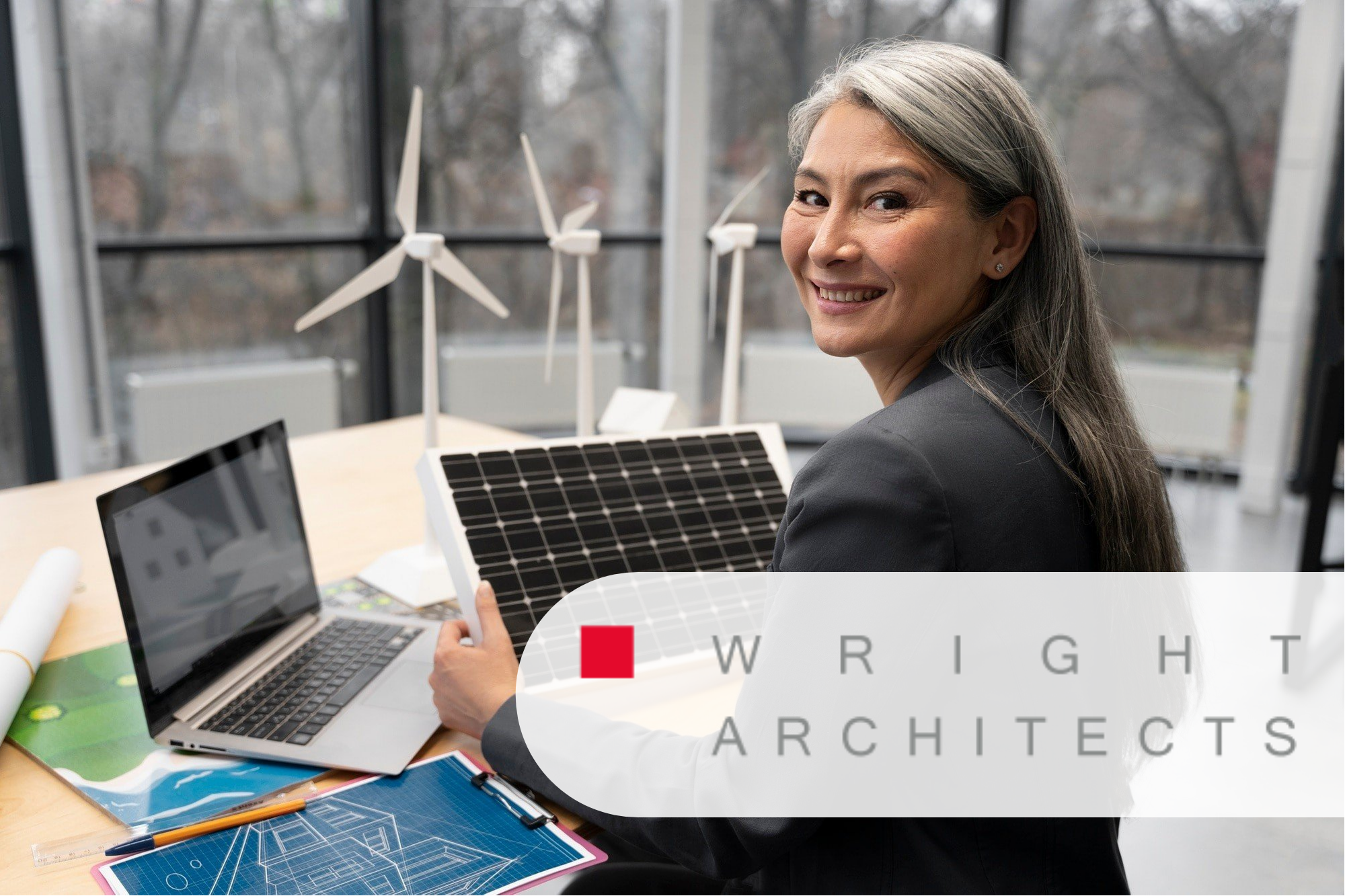
Long-Term ROI
Over a 20-year span, the cumulative cost savings from energy and maintenance efficiencies often exceed the initial premium for green construction. This long-term ROI positions sustainable homes as superior financial investments, aligning immediate lifestyle benefits with enduring economic performance. For developers, this means stronger pro forma outcomes and reduced financial risk. For homeowners, it ensures that the decision to invest in sustainability pays dividends not just environmentally, but also economically. Wright Architects underscores this with detailed projections and case studies, showing how mid-sized projects consistently deliver positive financial returns alongside environmental benefits.
By documenting these outcomes, Wright Architects strengthens its case to investors, developers, and homeowners that green design is not a speculative choice but a proven strategy. In a competitive housing market where performance and differentiation matter, data-driven results provide the evidence needed to make sustainability a standard practice rather than a niche pursuit.
The Enduring Role of Architectural Expertise
While prefabricated and modular construction has grown in popularity in recent years, Wright Architects underscores that architectural expertise remains essential for sustainable, mid-sized projects. Prefab efficiency may offer cost and time benefits, but it rarely delivers the site-specific, culturally sensitive solutions required for true sustainability. In regions like the Hudson Valley, where environmental conditions, historical context, and community expectations are deeply intertwined, architectural judgment ensures that each project achieves harmony between performance, aesthetics, and long-term resilience.
Prefab solutions often operate on standardized templates, prioritizing speed of delivery and cost reduction over nuanced design. While these qualities can be advantageous for certain markets, they frequently overlook the complexities of terrain, solar orientation, stormwater management, and cultural identity, all of which directly influence a building’s long-term functionality and sustainability. Wright Architects points out that mid-sized projects benefit most from a customized approach that integrates site sensitivity, passive strategies, and materials selection into a cohesive vision.
Customization also remains critical for long-term value creation. A mid-sized residence that is carefully designed with energy performance, adaptability, and durability in mind will continue to provide returns decades after construction. From optimizing daylight penetration to reducing reliance on mechanical systems, architectural expertise ensures that every design decision contributes to both ecological responsibility and financial performance. Unlike standardized builds, which may require retrofitting or upgrades over time, a site-sensitive custom design anticipates future needs and integrates flexibility from the outset.
Furthermore, architectural expertise allows for the integration of advanced certifications and building standards, such as Passive House or LEED, which require a level of precision and coordination beyond most prefab offerings. Wright Architects leverages its credentials and experience to guide clients through these processes, ensuring that sustainability goals are met without compromising project timelines or budgets.
Ultimately, the enduring role of architectural expertise lies in its ability to transform mid-sized residential projects into living spaces that are not only efficient and durable but also deeply connected to their environment and community. Prefabrication may have its place, but for homeowners and developers seeking lasting value and authenticity, architectural insight remains indispensable.
Next Steps
Wright Architects continues to set the standard for sustainable, mid-sized residential design in the Hudson Valley and throughout the Northeast. Their work demonstrates that environmentally responsible architecture is not only achievable but also desirable, for homeowners, investors, and communities alike.
Those interested in learning more about their projects and philosophy can explore their website at wrightarchitectspllc.com, where a full portfolio of residential architecture and sustainable design is available. The collection highlights a wide range of projects, from riverfront retreats to modern mountain residences, each tailored to site, scale, and sustainability goals.
For design inquiries, media contact, or project discussion, Wright Architects invites direct connection. Whether you are considering a new custom residence, exploring energy-efficient upgrades, or researching sustainable development strategies, the firm’s team is prepared to provide guidance rooted in decades of regional expertise and internationally recognized certifications.
By engaging early in the design process, clients gain the advantage of Wright Architects’ holistic approach, ensuring that sustainability, cost-efficiency, and long-term value are seamlessly integrated from concept to completion.
Take the next step toward creating a home that balances performance, beauty, and regional identity. Connect with Wright Architects today to begin the conversation.


